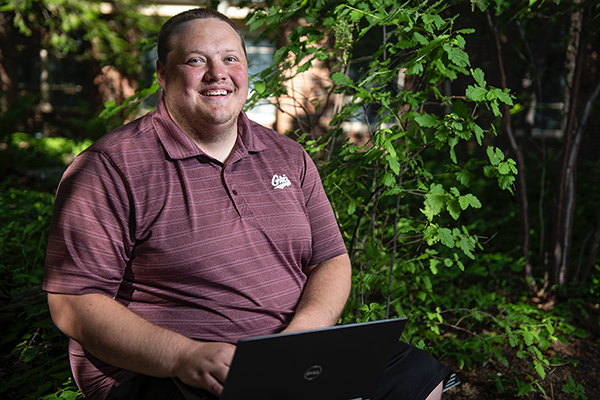
MISSOULA – When Montana Gov. Steve Bullock issued a “Stay-at-Home” order this spring due to the COVID-19 pandemic, students were unable to access the University of Montana’s traditional computer laboratories and academic- and research-focused hardware and software.
Zach Rossmiller, UM executive director of cyberinfrastructure, brought together Information Technology staff from across campus to investigate solutions to enable students to access these critical technology resources. The effort resulted in the Advancing Student Success through Innovative Scalable Technology (ASSIST) project.
“This was a collaborative effort from many IT leaders across campus,” Rossmiller said. “We knew that some students would not have access to certain software resources generally available in our computer labs. The ASSIST project provides a way for students to continue their studies and projects.”
Taking advantage of existing hardware, ASSIST is architecting a virtual lab environment for students to use remotely. It will provide UM an opportunity to pilot new technologies (i.e. virtual desktop instances or VDI) that allow students to use specialized software with the same performance and experience as working physically in a computer lab.
The performance of graphic-intensive software, such as ArcGIS and AutoCAD, can struggle in this type of environment. So for the project, UM IT systems administrators Antony Jo and Jon Robinson identified solutions to enhance the student experience by including additional graphics processing units, funded through a grant from the Student Computer Fee Committee.
UM Chief Information Officer Renae Scott was instrumental in obtaining additional funding for this project, and she is pleased with the effort.
“Being able to provide virtual computer labs for students during remote teaching, learning and working was vital for the students’ success and completion of their coursework,” Scott said. “I am thrilled that we were able to obtain funding to meet the needs of our students.”
Shawn Clouse, a professor in UM’s College of Business, worked with IT on the project and offers several courses that immediately benefited from ASSIST. His Business Application Development course (BMIS 365) uses Microsoft Visual Studio to develop programs in Visual Basic, and his Project Management course (BMIS 476) uses Microsoft Project to design, develop and implement software solutions for area businesses and nonprofits.
Many students had used the Gallagher and Mansfield computer labs to conduct their projects and complete homework, and they found it difficult to finish the two classes when on-campus labs closed due to the COVID-19 pandemic. ASSIST provided an online environment for students to complete their coursework.
“Having this resource available at UM was extremely valuable for my students,” Clouse said. “It was easy to use, and many of my students used the virtual labs to complete their work in the two courses. Having a traditional computer lab available remotely through the power of virtualization was very impactful to me and my students.
“I want to say a special thanks to UM IT employees from across campus, Antony Jo, Zach Rossmiller, Jon Robinson, Thomas Crane, Wesley Samson and Renae Scott, for making the virtual labs possible.”
Rossmiller will evaluate the ASSIST project through usage statistics and student feedback surveys.
“ASSIST is an ongoing project and has the potential to revolutionize the traditional computer lab,” he said.
###
Contact: Zach Rossmiller, UM executive director of cyberinfrastructure, 406-243-6556, zachary.rossmiller@umontana.edu.